Indian Ethnographic Expedition Part III. Bombay, BangaloreMapMay 23 — June 13, 2015 In India registration procedures bear no relation to the size of the country’s population. We are being photographed in the lobby of our lodgings. There are over one billion inhabitants, and yet they spent so much time registering us and copying out our passport details you could be forgiven for thinking this is a country with a population of 1.5 people. In actual fact this is an important Indian ritual that’s meant to symbolise order. 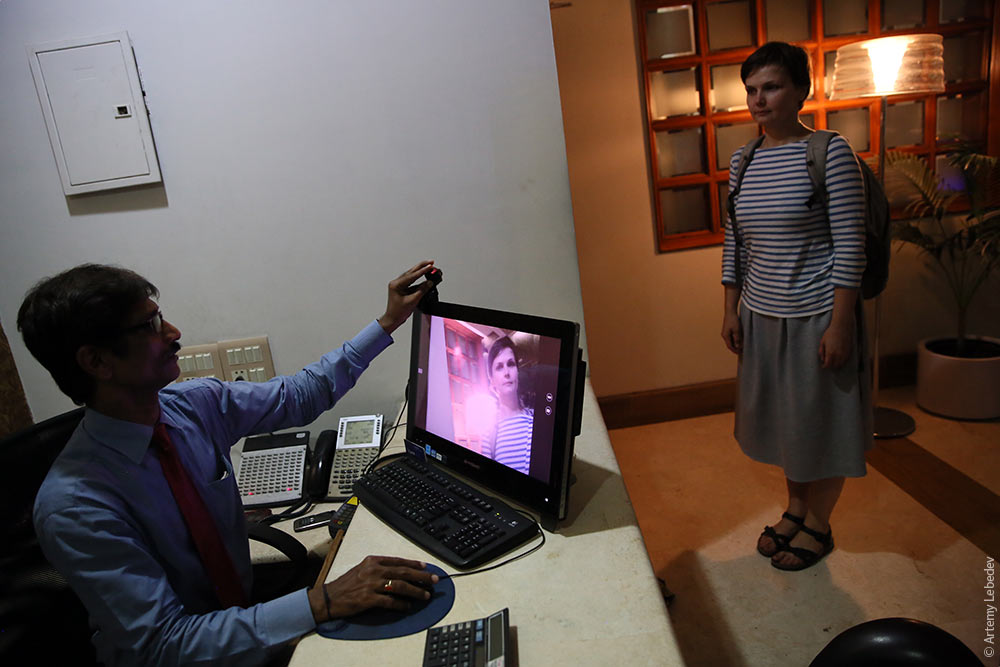 A highway sign showing where you can make a U-turn. 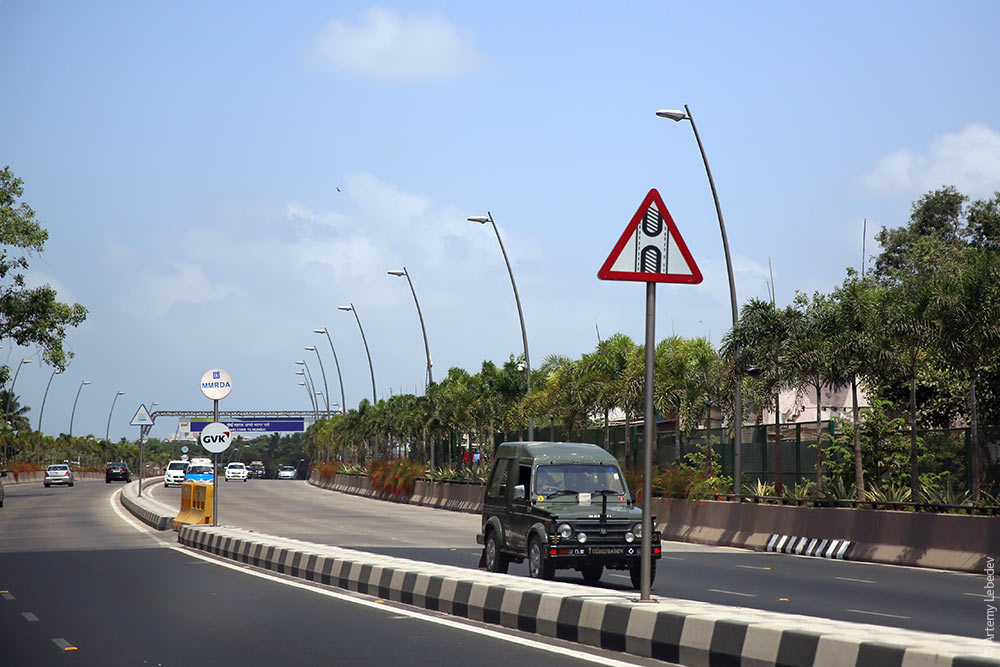 A post with yellow inner tubes and tyres on it denotes tyre changing services. 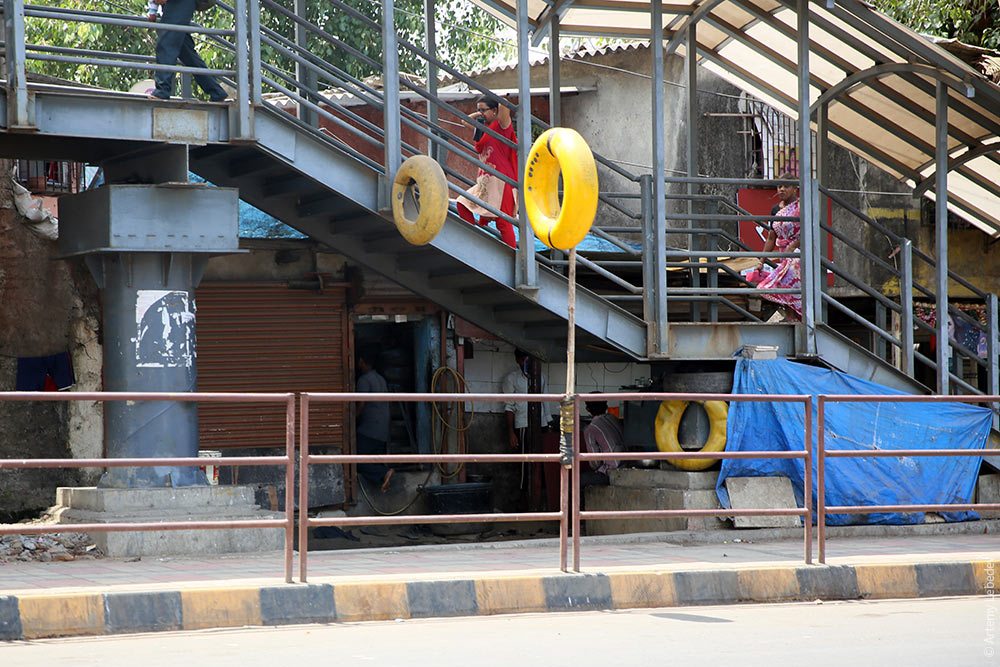 — Five hundred rupees to get to Bandra! — yells the taxi driver shamelessly overcharging his customers. 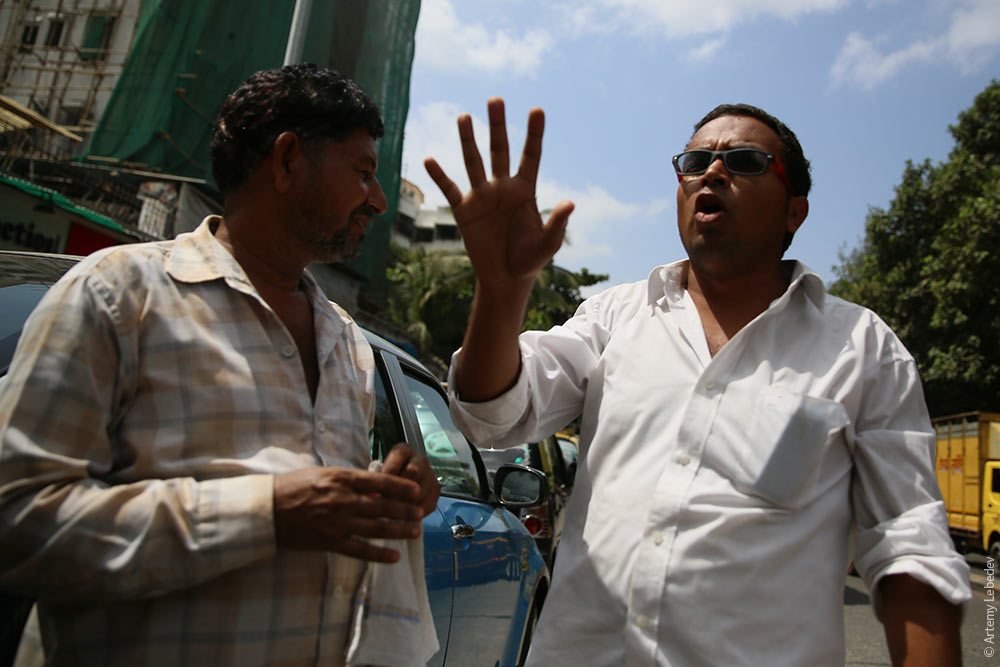 BombayMap
For some reason, Bombay was renamed Mumbai. Supposedly, this sounds more like the original title. But I am not ready to switch to the new name. Bombay is the London of the future. What an amazing city. Enormous, diverse and lively. 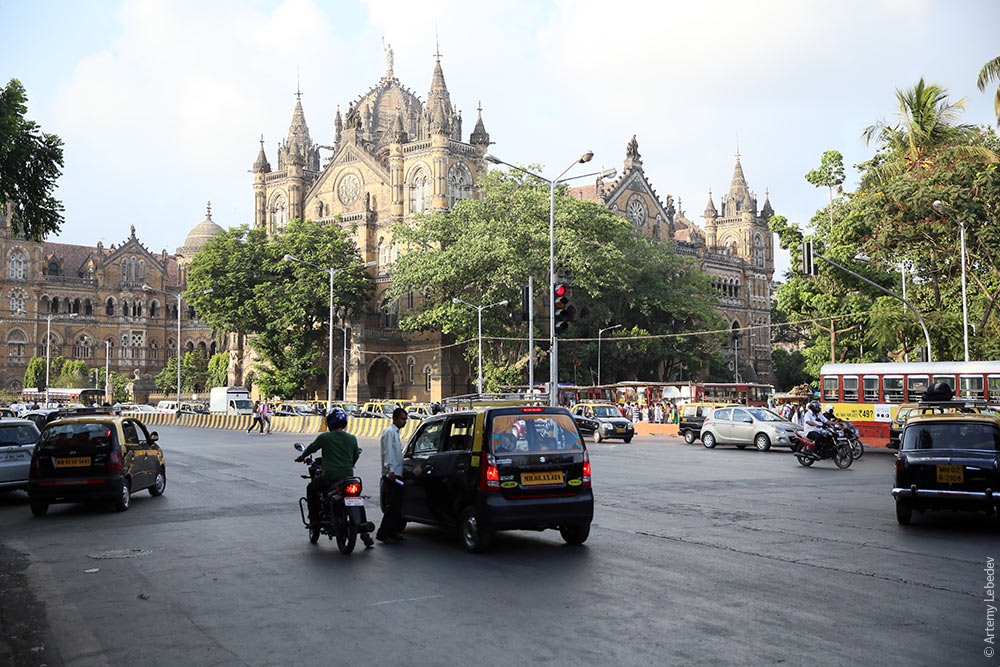 A street food market. This dude is selling refreshments right out of this rubbish dump because that’s where the shadow of the footbridge above currently falls. Neither the seller, nor the customers seem at all bothered by the smell or the surroundings. I’ve found my favourite street food. 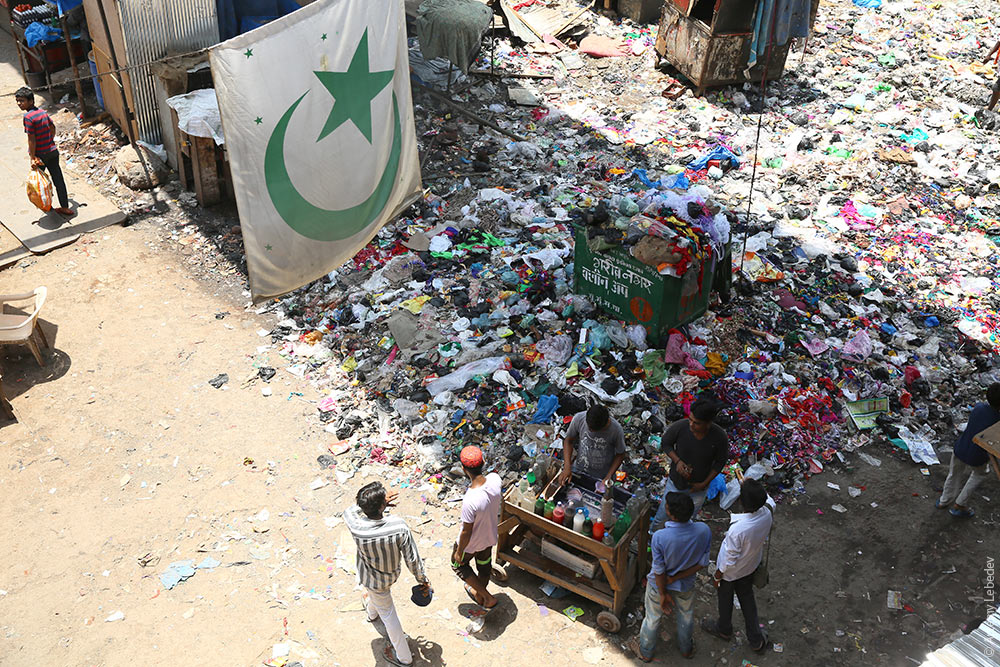 Giant advertising billboards are the dominant feature in Indian slums. 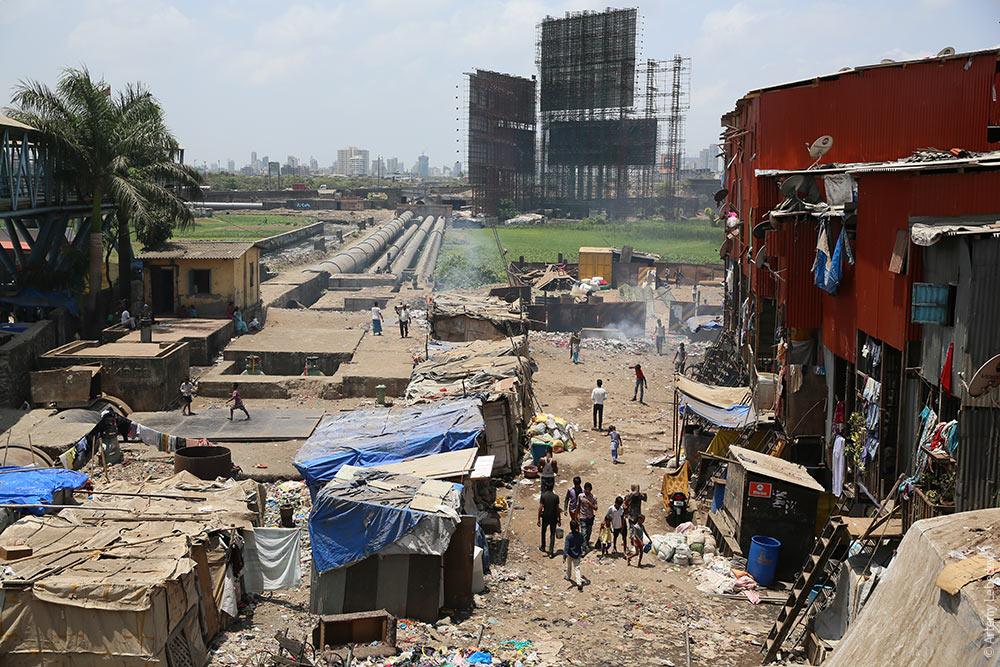 Delightful four-storey houses. 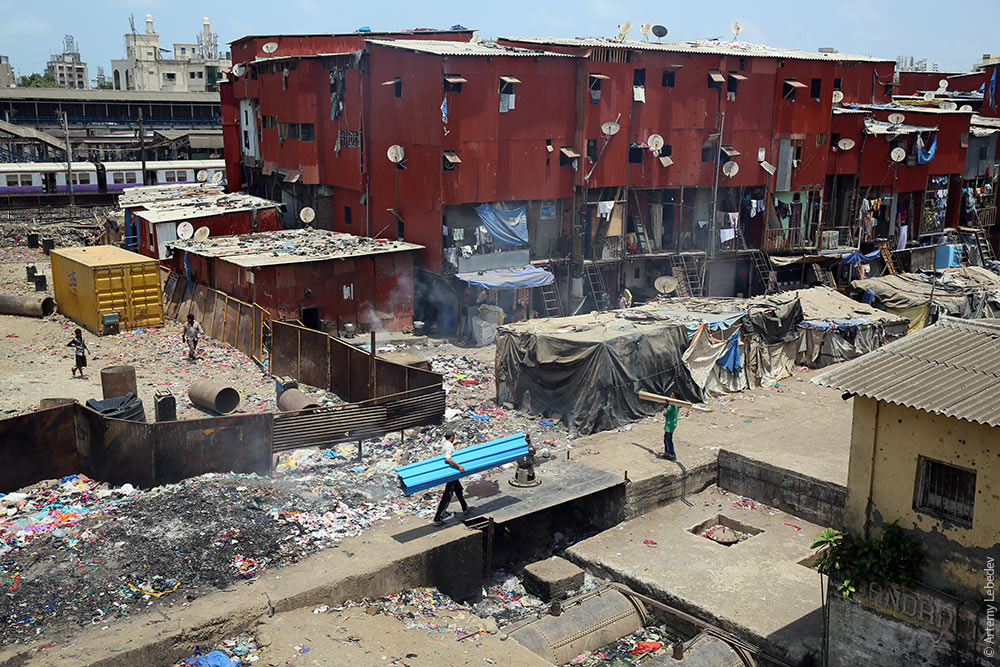 The only limit on the number of storeys in the slums: their dwellers’ imaginations. 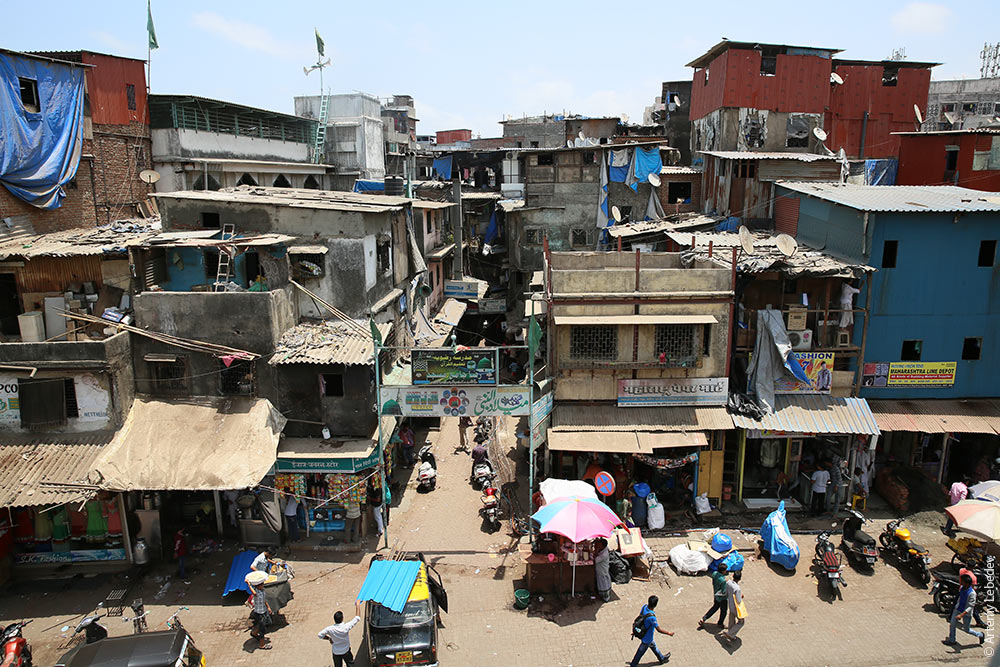 There’s a very snug pipeline nearby which the locals use as a public toilet. In the background you can see someone getting ready to take a dump. Meanwhile, in the foreground you can see a young Bombayite helping his friend climb up without getting all dirty.  Your own home with canal views — any takers? 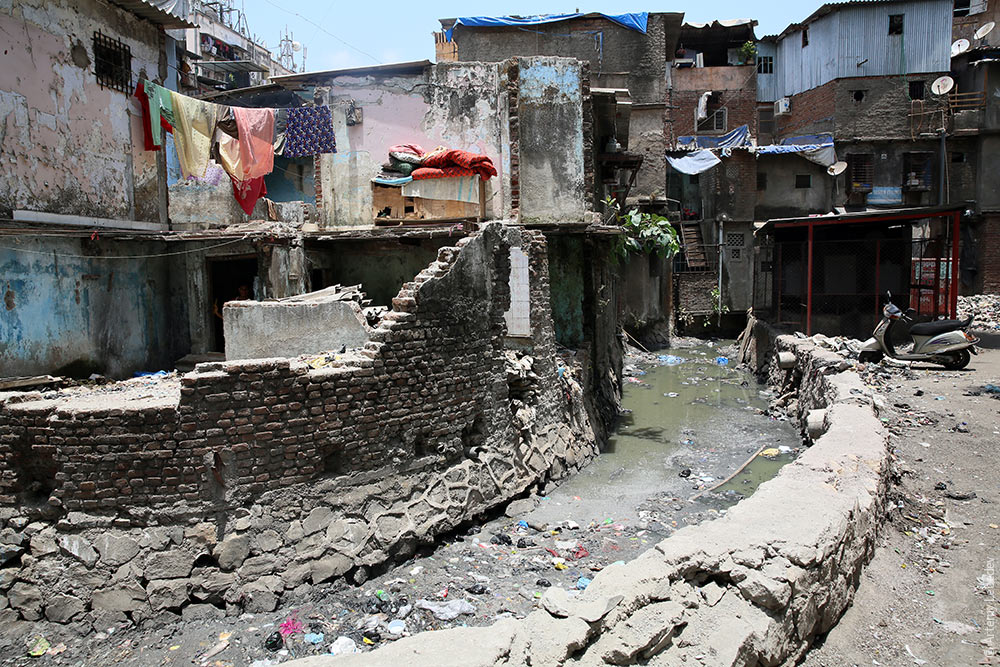 The metro has some women-only carriages. In this case — a second-class carriage reserved exclusively for women. 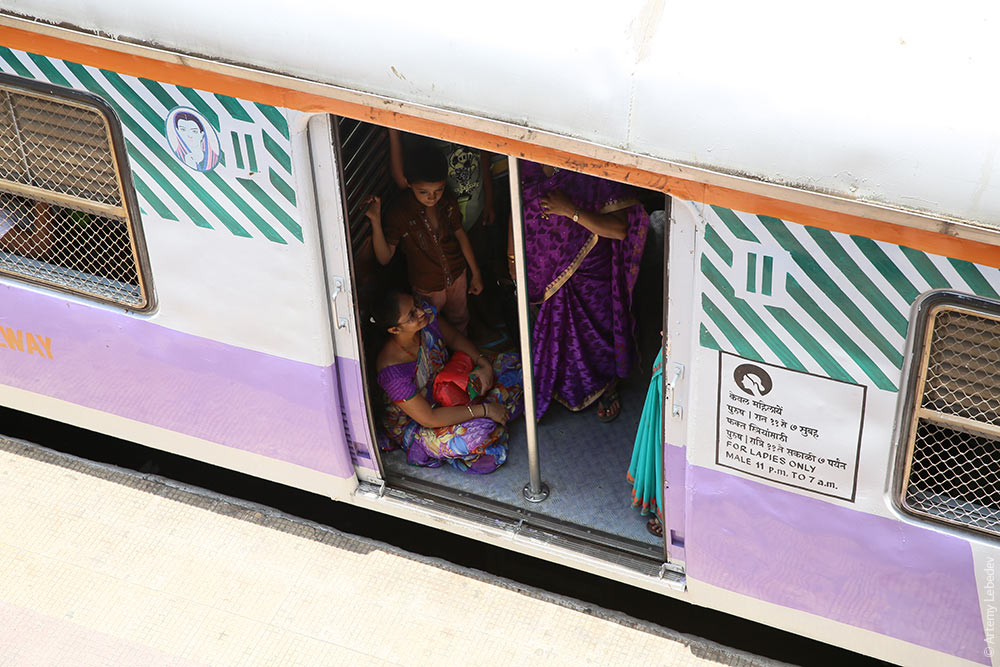 Buses in Bombay are unlike any other buses in the world because the turn signals are only visible from the front. You can’t seem them from the sides. 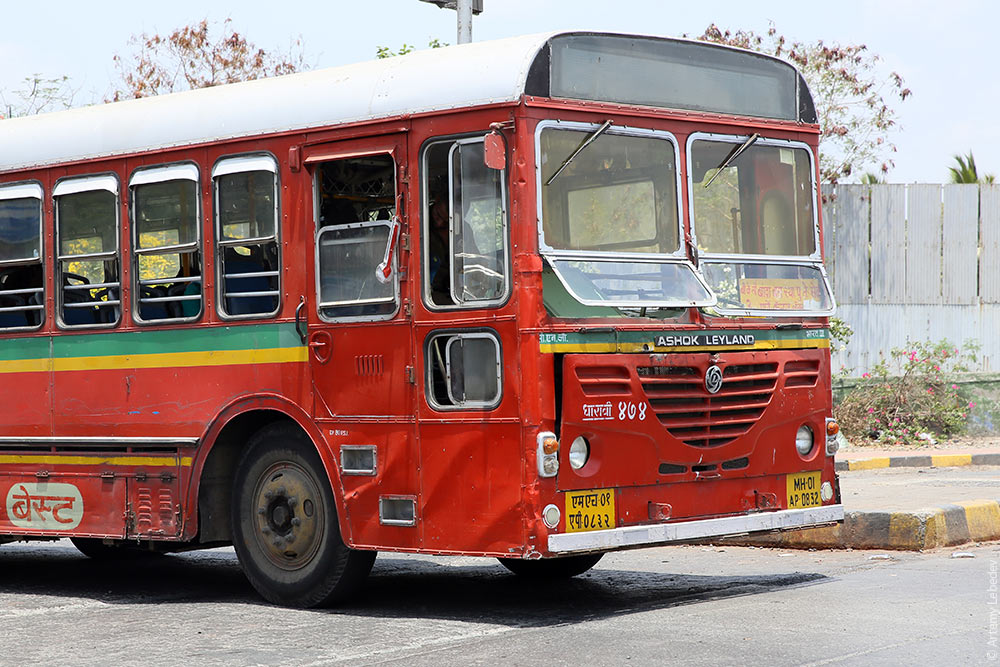 So an Indian DIY genius (jugaad) went and attached an arrow, which the driver has to move by hand, to each of the buses. This arrow says, “I’m turning right” better than any light bulb. 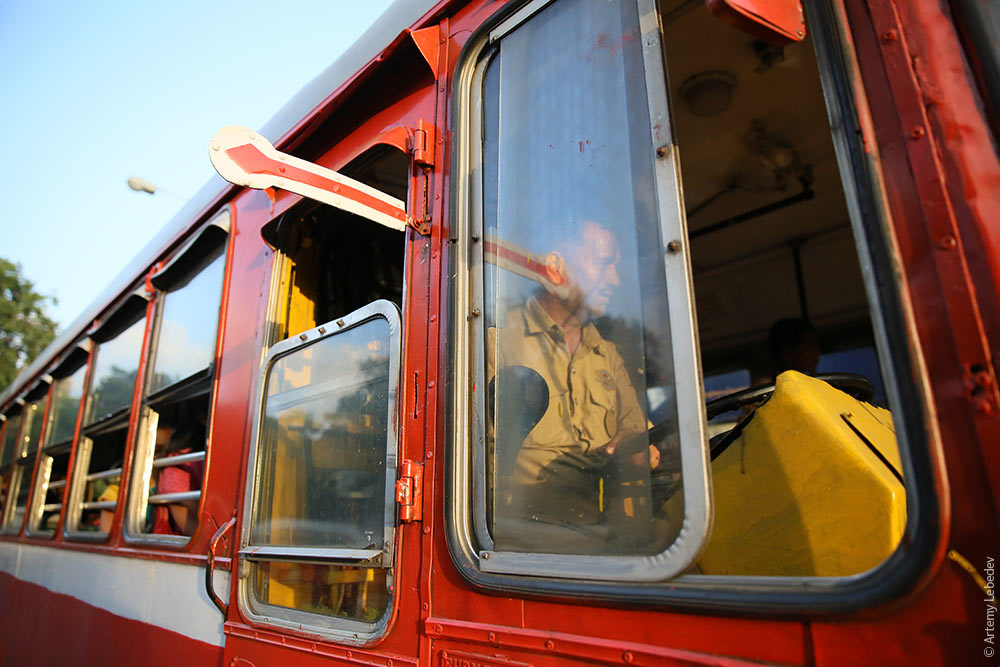 Waste container, inverted perspective. 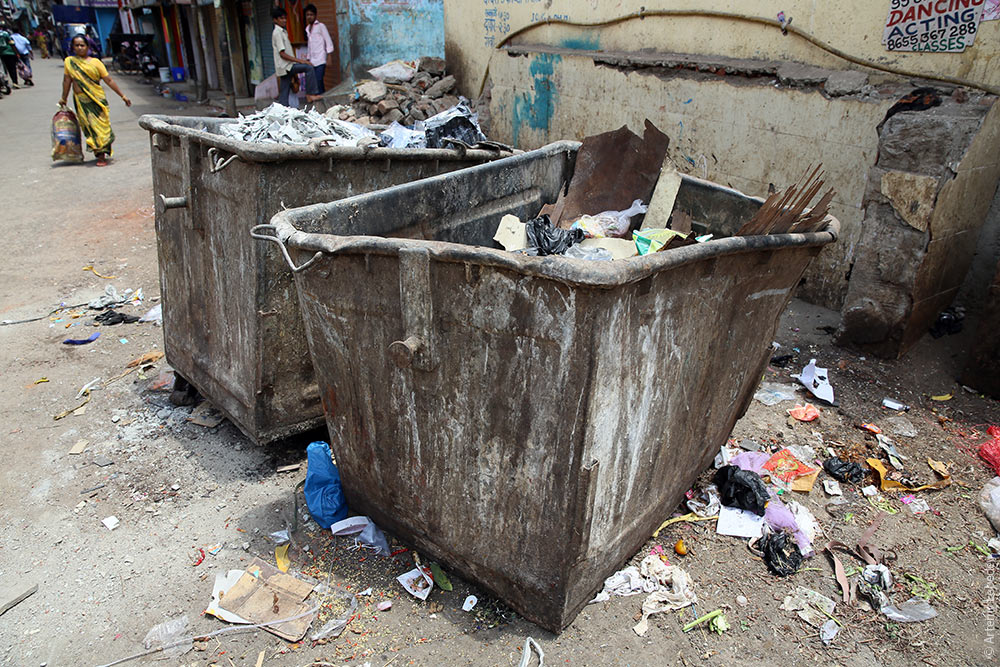 Narrow street. 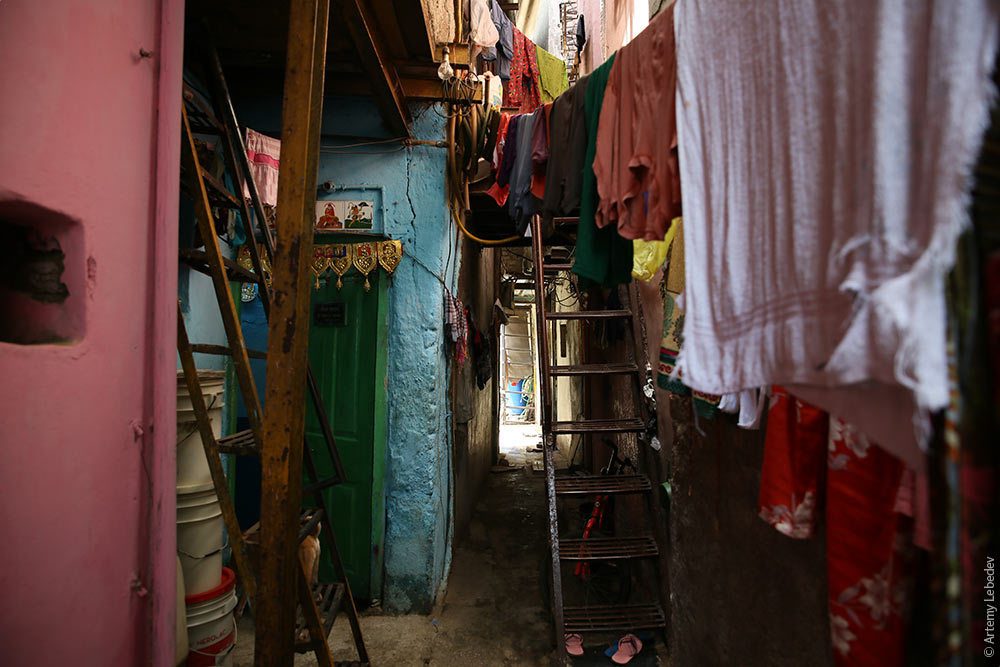 Granny with swastika. 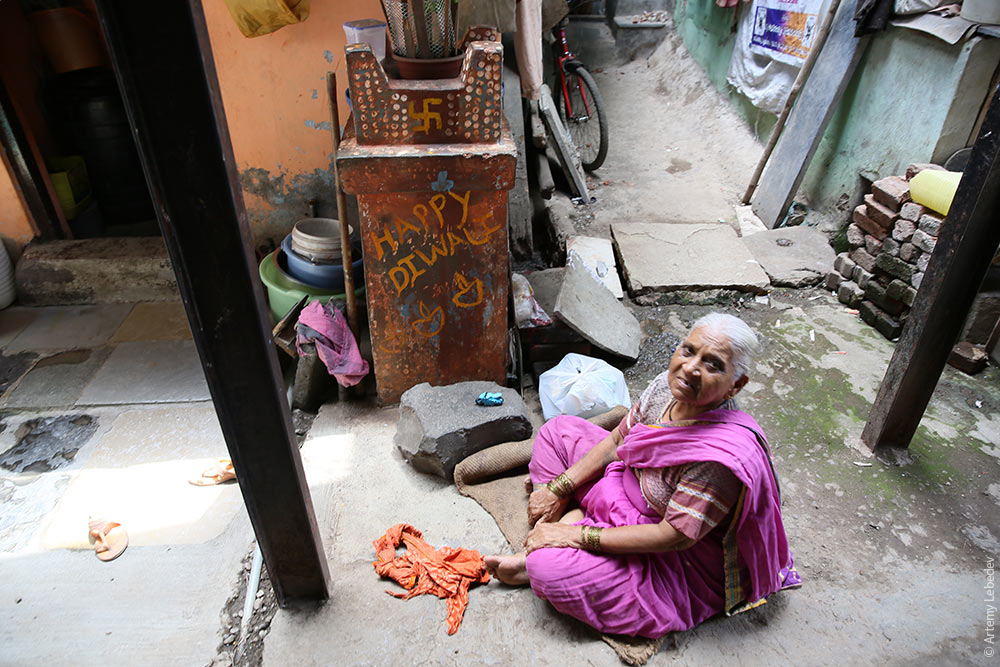 In India, 99% of women have their left nostril pierced. Girls wear studs, while a ring (nath) denotes a married woman. 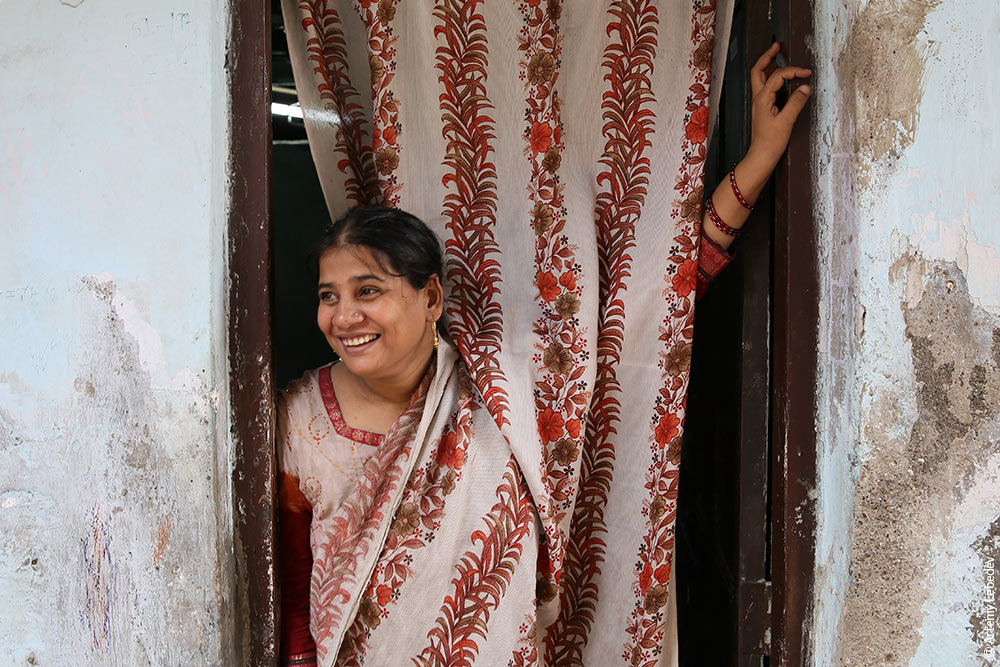 The Leopold café, described so beautifully in Shantaram, turned out to be a fairly average food joint. None of the beauty remains, the floor is tiled with ordinary shitty tiles and there aren’t any marble tops on the tables. 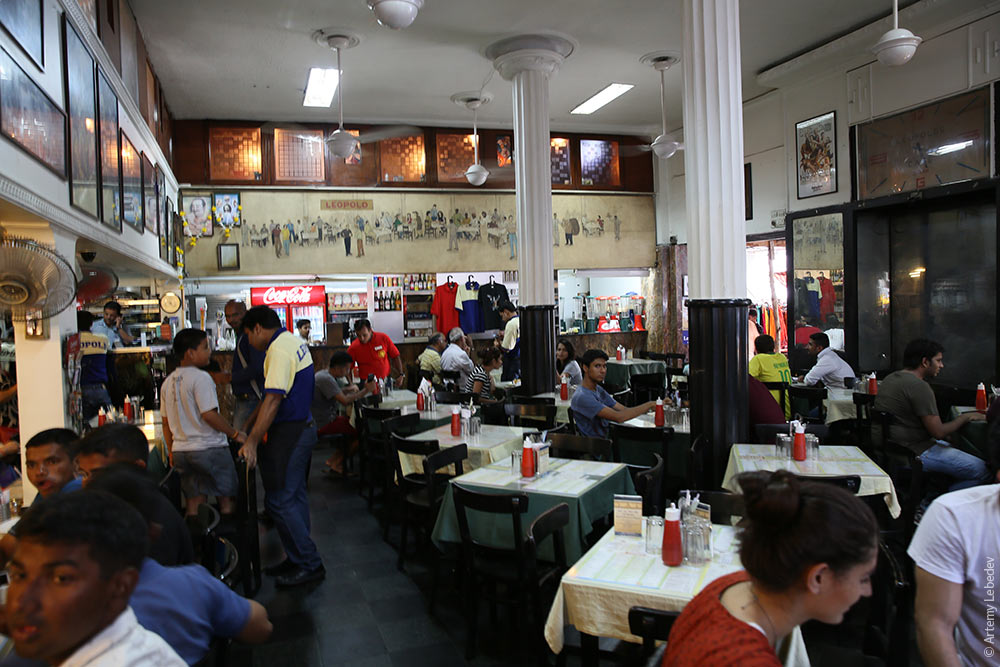 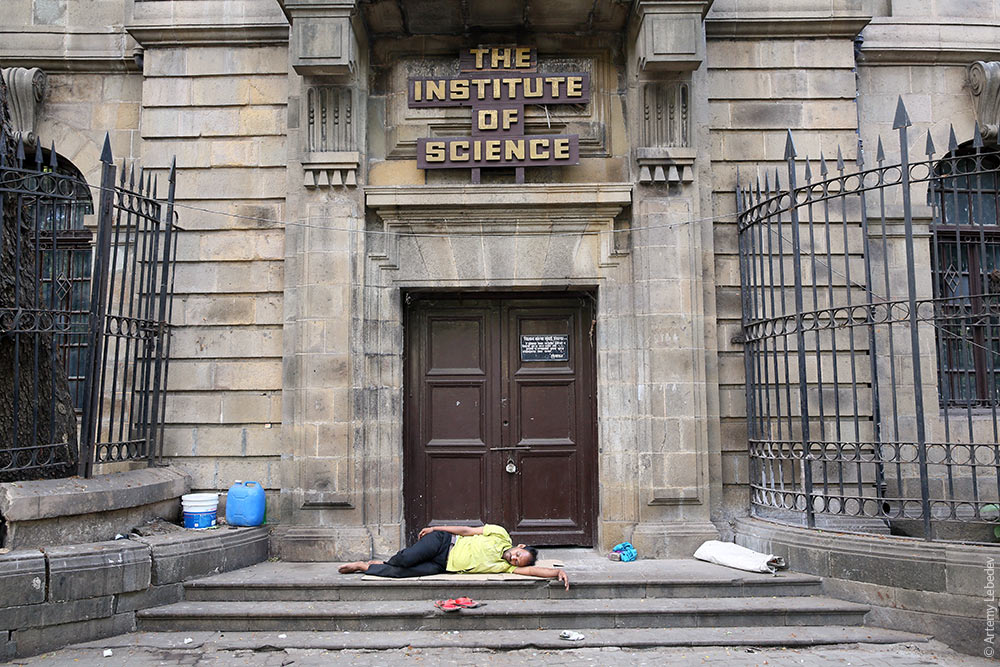 A pauper rummaging through a pile of rubbish finds delight in something in a newspaper dating back to the day before yesterday. 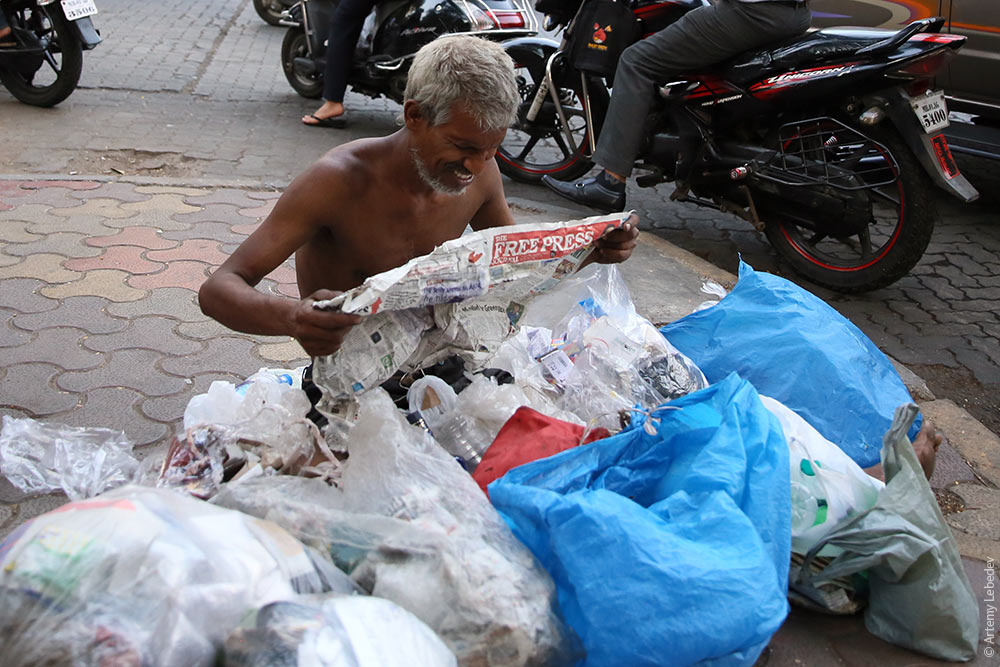 In the heart of Bombay’s downtown a magnificent colonial quarter is still standing. The majestic beauty of this place is offset by the chilled out locals. 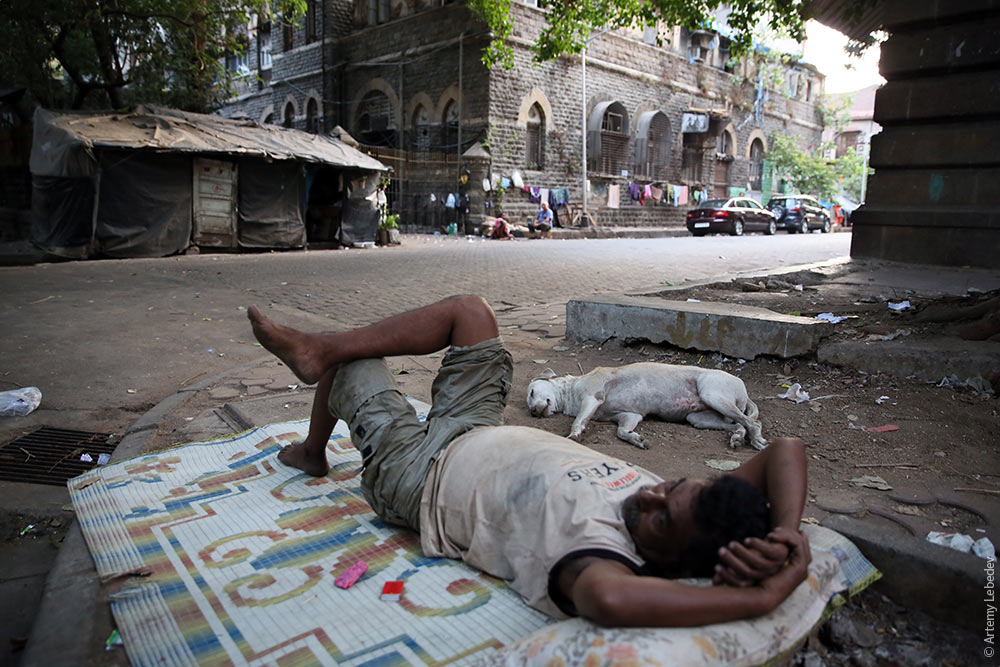 Bombay by night. 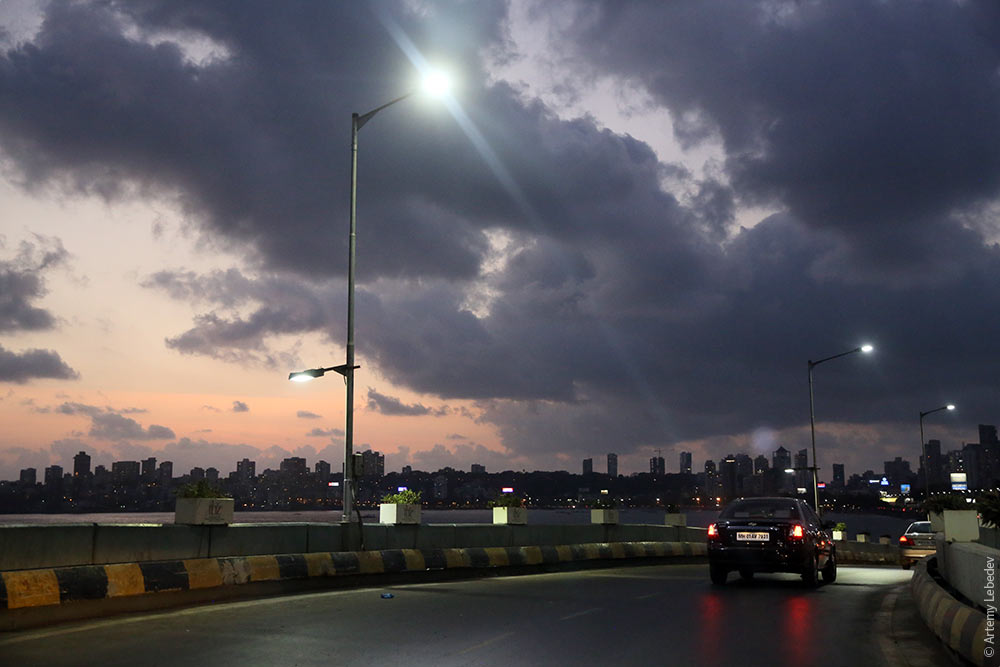 The tallest private skyscraper in the world towers over this taxi driver and plastic grapes. 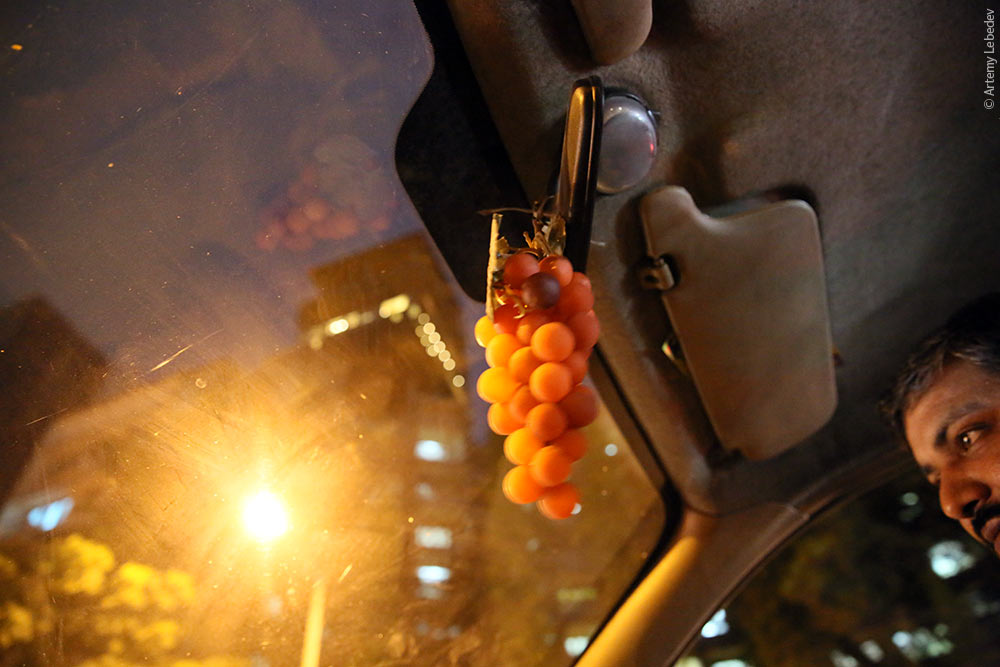 BangaloreMapBangalore is kind of like the Silicon Valley of India. Even the airport signage says that the locals are ahead of the pack compared to other Indian cities. 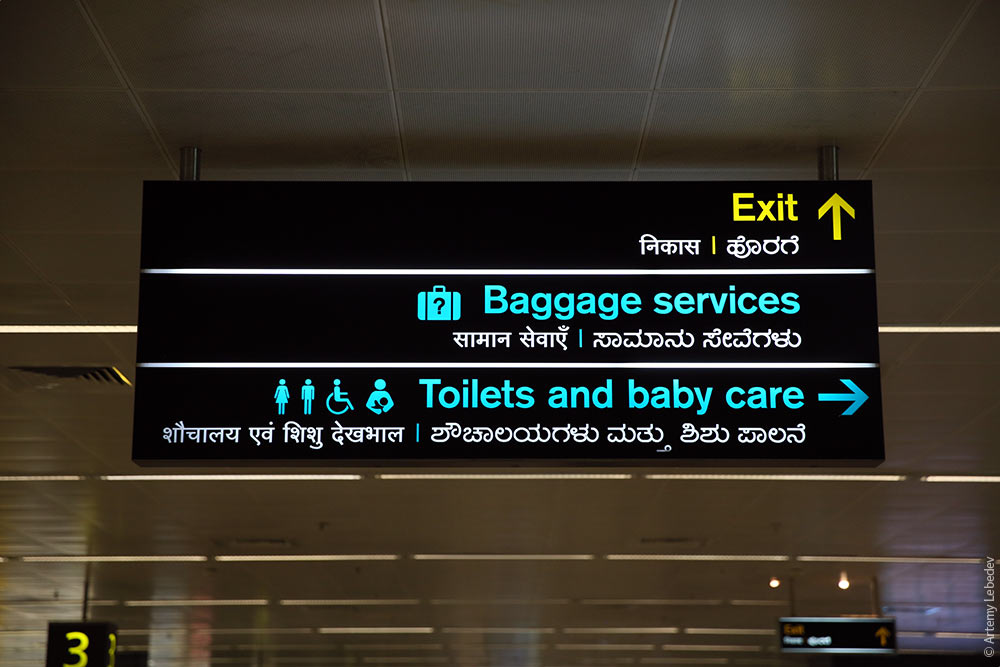 How very modest. 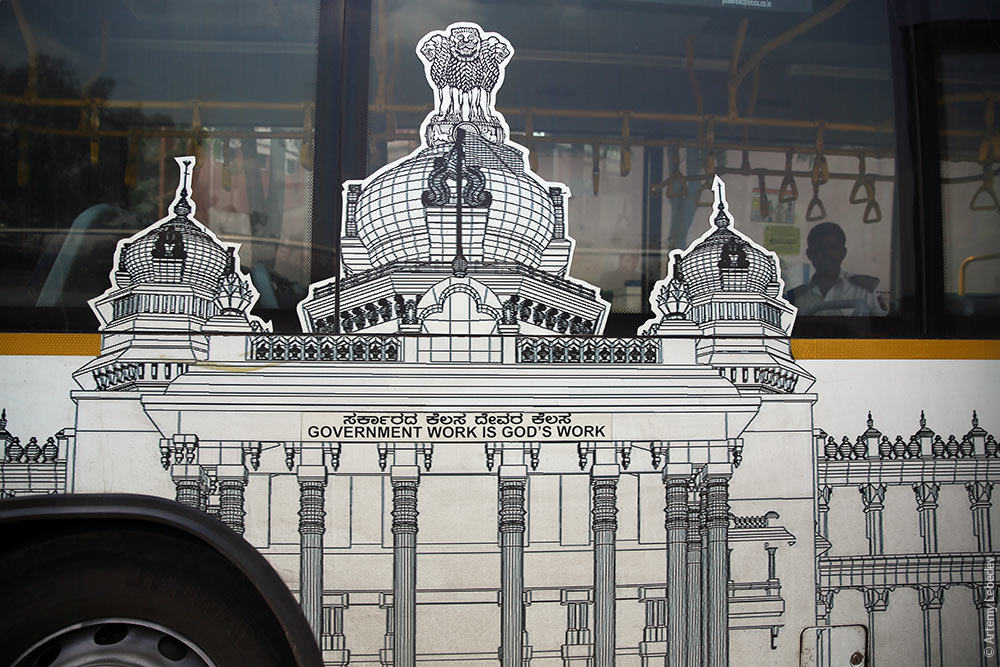 Only once did we find a tuk-tuk that fit all six of us with our six large suitcases. Then the fun was over and we had to get two separate tuk-tuks each time. Most of them are adorned with stickers depicting various bearded men. I wouldn’t be able to drive around all day while starting at some bearded dude, even if he were considered a god. 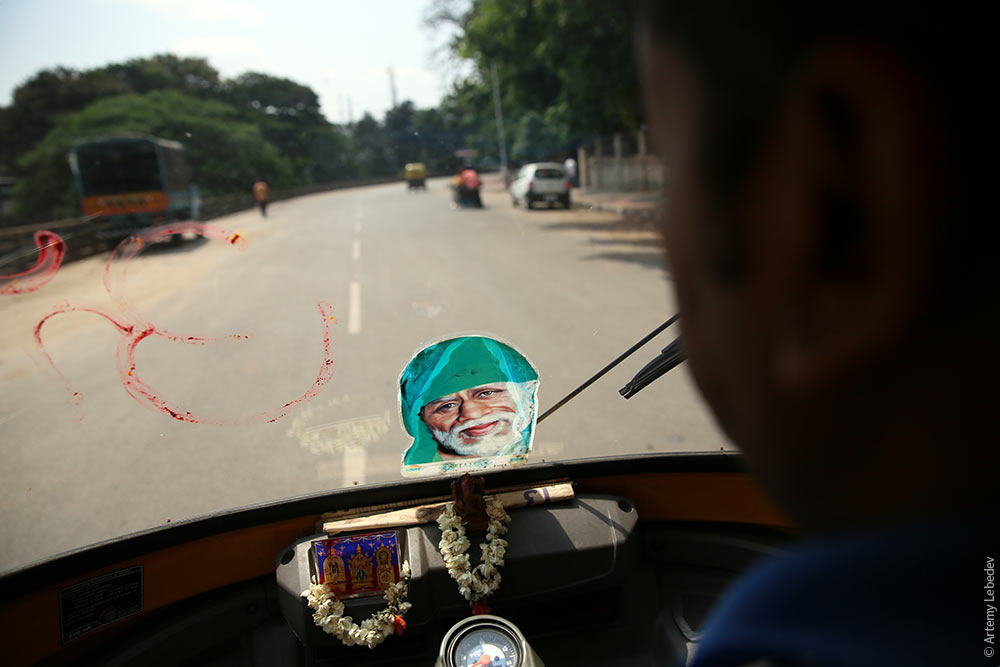 Indian woman at a bus stop. 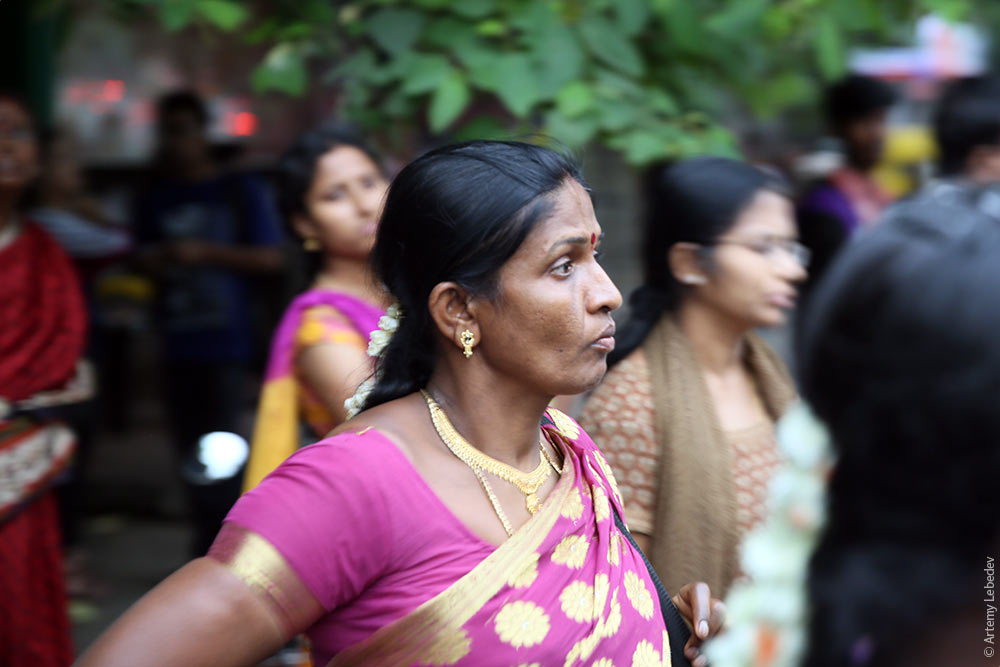 Bangalorean sign meaning danger. 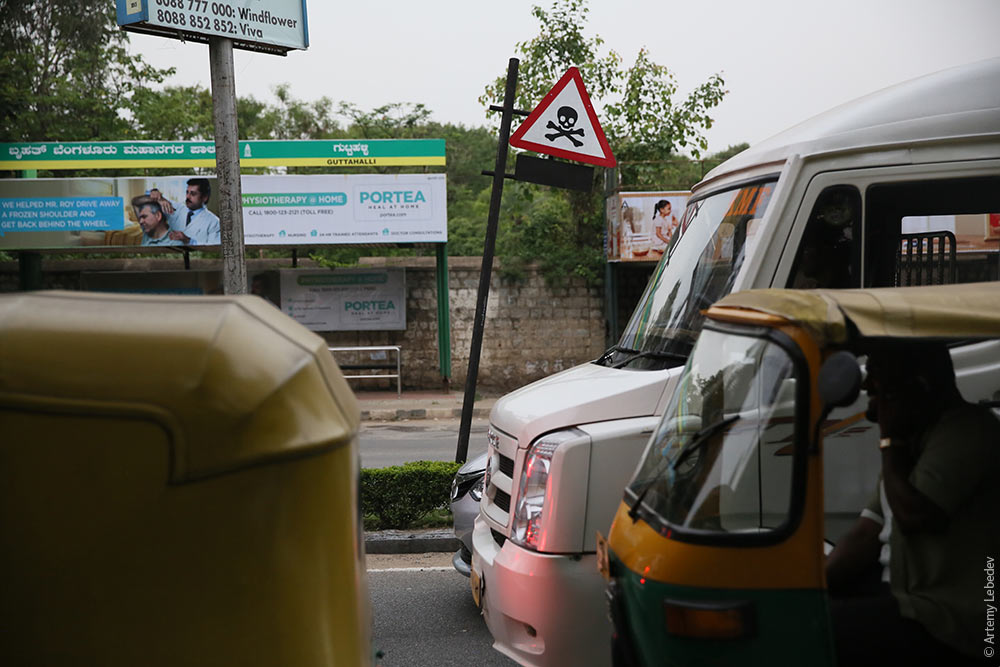 A poster with actors I’ve never heard of. 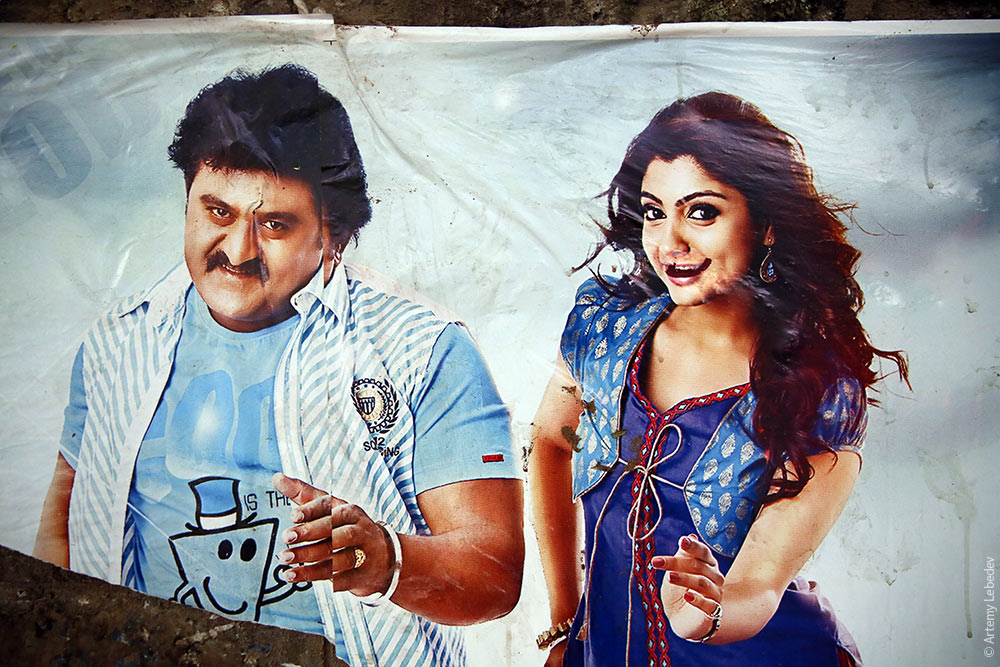 Parking lot for imitation carriages and grazing area for the horses that draw them. 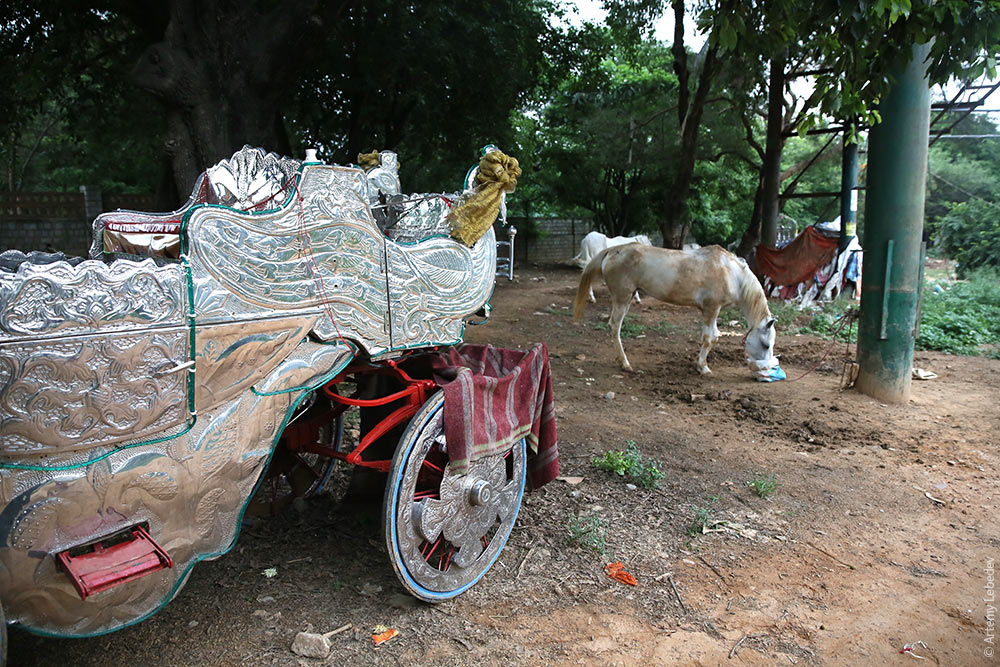 They’ve got a miniature Windsor Palace here. 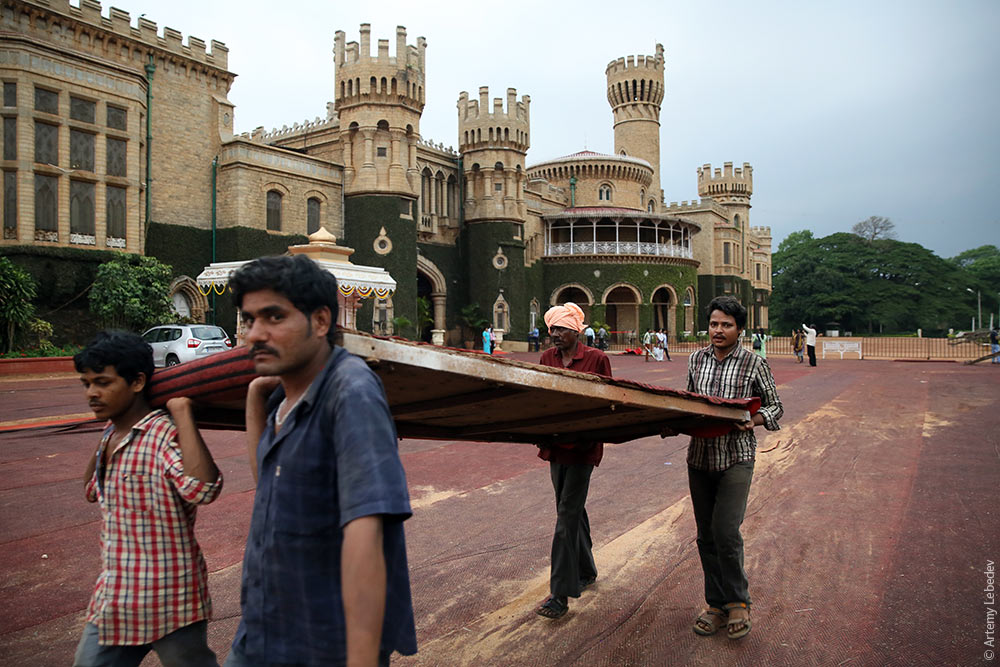 Inside there’s a wall-mounted elephant head. 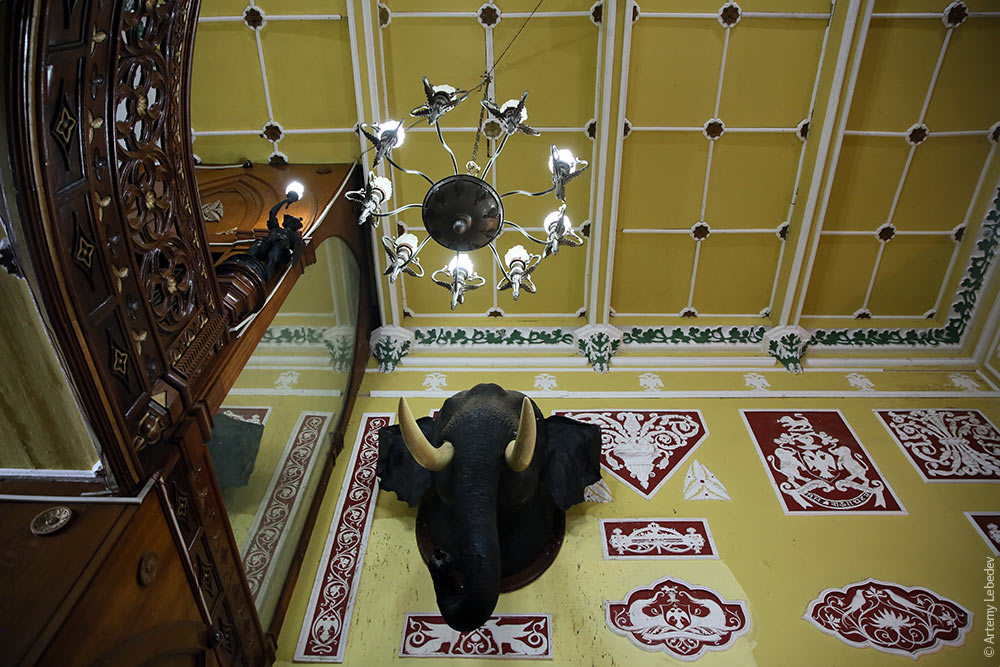 Dogs sprawl out on the fitted carpet. 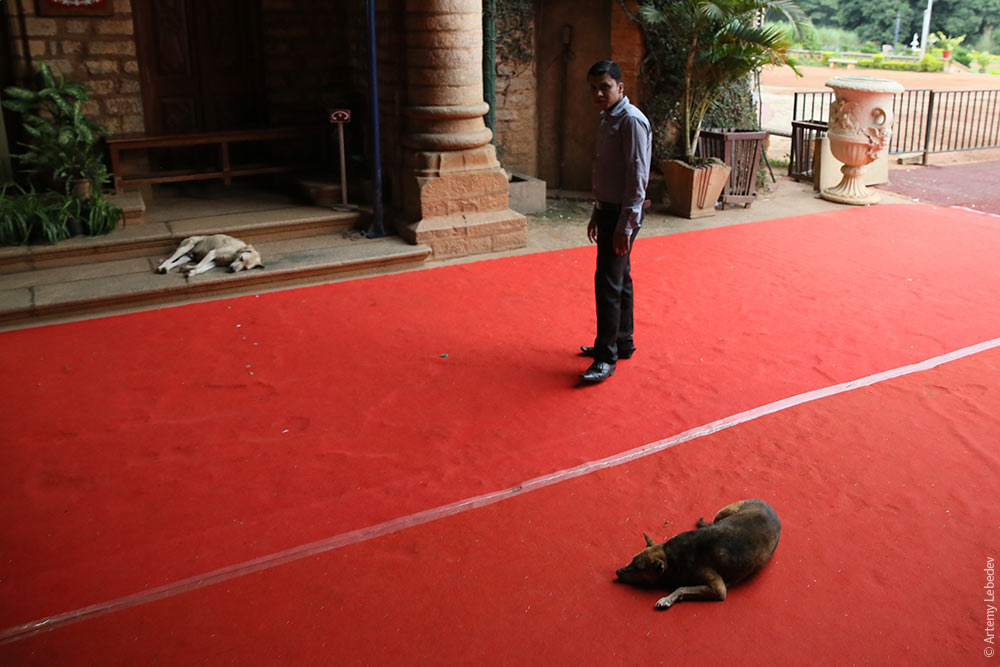 Advertising posters fluttered in the wind; there was a downpour. 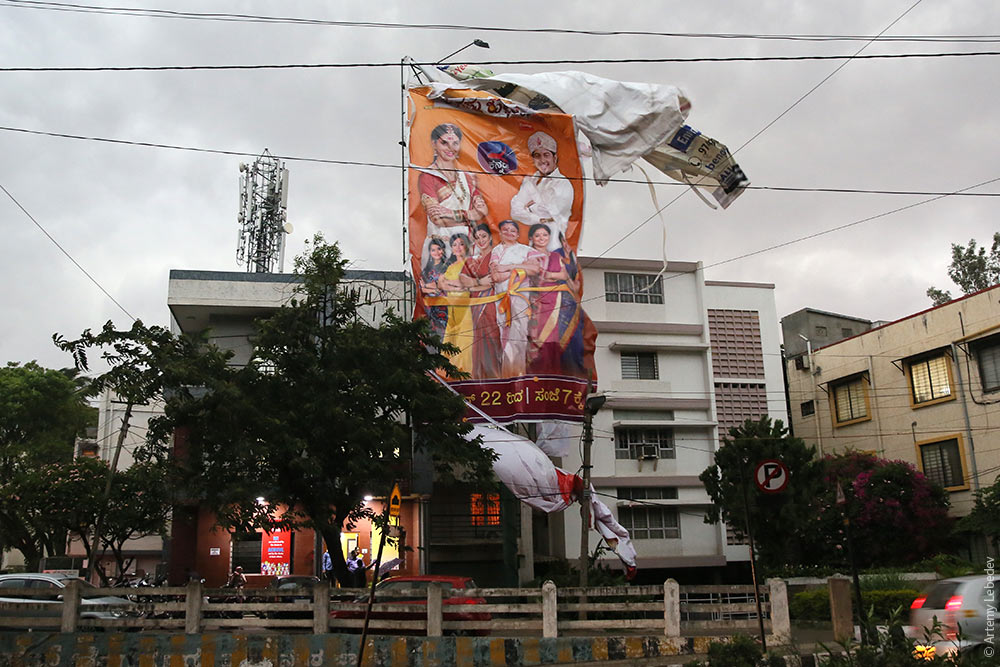 All of a sudden it was overcast. And cold. A dusty wind blew. I looked upwards and couldn’t believe my eyes. The density of the tree branches and the foliage was perfectly uniform. I stood there, spellbound, and took photographs of this incredible beauty until raindrops began to flood the camera lens, erasing any distinction passersby could see between the raindrops and my own tears. 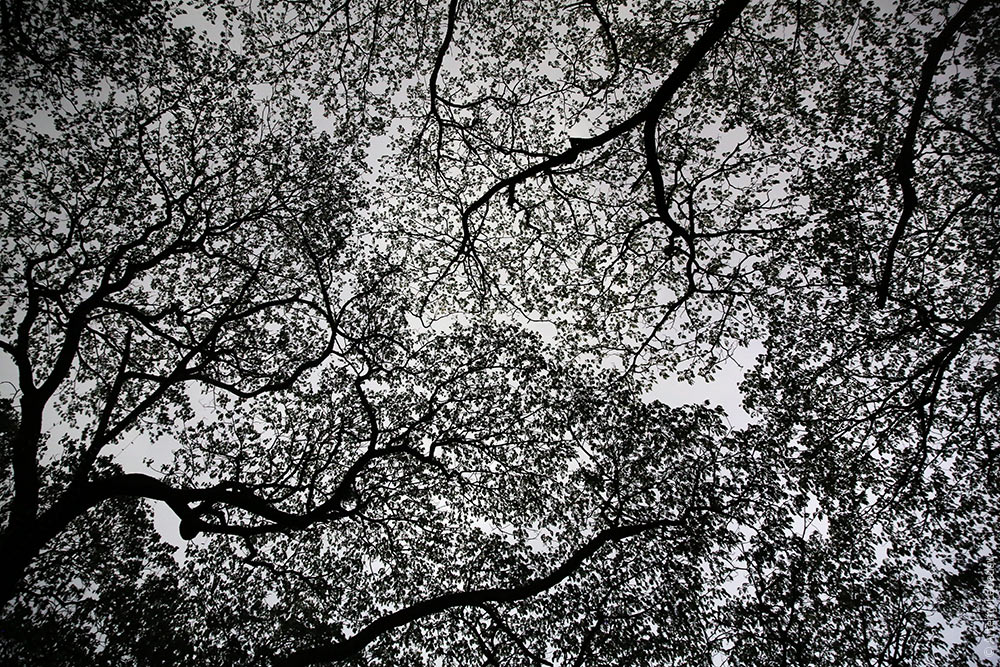 |